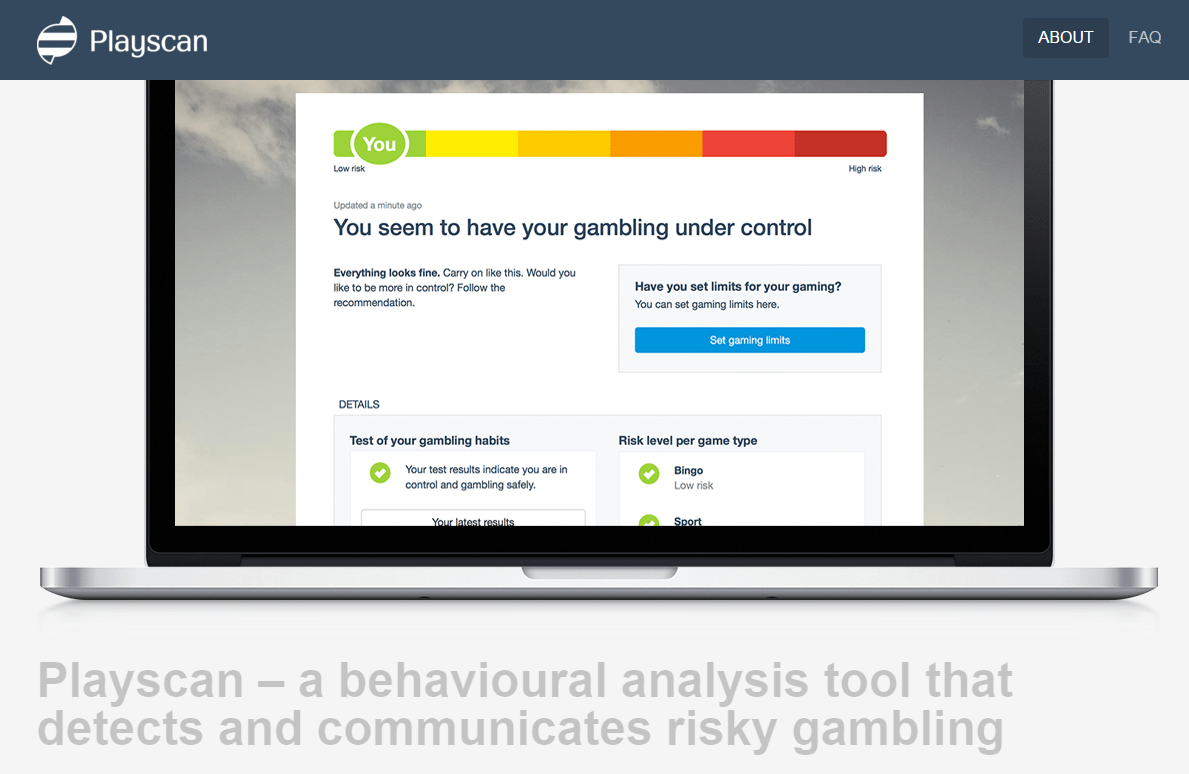Gambling is a common pastime around the world. Most gamblers can engage in gambling activities without negative consequences, but some run the risk of developing an excessive gambling pattern. Excessive gambling has severe negative economic and psychological consequences, which makes the development of responsible gambling strategies vital to protecting individuals from these risks.
One such strategy is responsible gambling tools (sometimes refered to as social responsibility tools). These tools track an individual’s gambling history and supplies personalized feedback and might be one way to decrease excessive gambling behavior. However, research is lacking in this area and little is known about the usage of these tools.
One such tool is Playscan. The development of Playscan started out in 2006 as a joint project between the data mining company ICU Intelligence, Sustainable Interaction and the Swedish state-owned lottery, Svenska Spel. Today, Playscan is fully powered by Svenska Spel. Svenska Spel has been appointed most responsible gaming company. In fact, the current study was made possible thanks to a Grant from the Svenska Spel’s independent research council to Professor Per Carlbring. Notably, the granting source was not involved in the preparation or execution of the current study, and was not a part of the statistical analyses or drafting of the manuscript.
In Sweden, approximately 70 % of the population gambles at least once a year, roughly 44 % of the population gambles every month, and according to a national prevalence study, about 2.2 % of population is considered “problem gamblers”.
The overarching aim of our new paper (which just was accepted for publication in Journal of Gambling Studies) was to describe user behavior and to investigate if there are different subclasses of users by conducting a latent class analysis. The user behavior of 9528 online gamblers who voluntarily used a responsible gambling tool was analyzed. Number of visits to the site, self-tests made, and advice used were the observed variables included in the latent class analysis.
Descriptive statistics show that overall the functions of the tool had a high initial usage and a low repeated usage. Latent class analysis yielded five distinct classes of users: self-testers, multi-function users, advice users, site visitors, and non-users. Multinomial regression revealed that classes were associated with different risk levels of excessive gambling. The self-testers and multi-function users used the tool to a higher extent and were found to have a greater risk of excessive gambling than the other classes.
Read the full paper:
Forsström, D., Hesser, H., & Carlbring, P. (2016). Usage of a Responsible Gambling Tool: A Descriptive Analysis and Latent Class Analysis of User Behavior. Journal of Gambling Studies, 32(3), 889-904. doi:10.1007/s10899-015-9590-6
